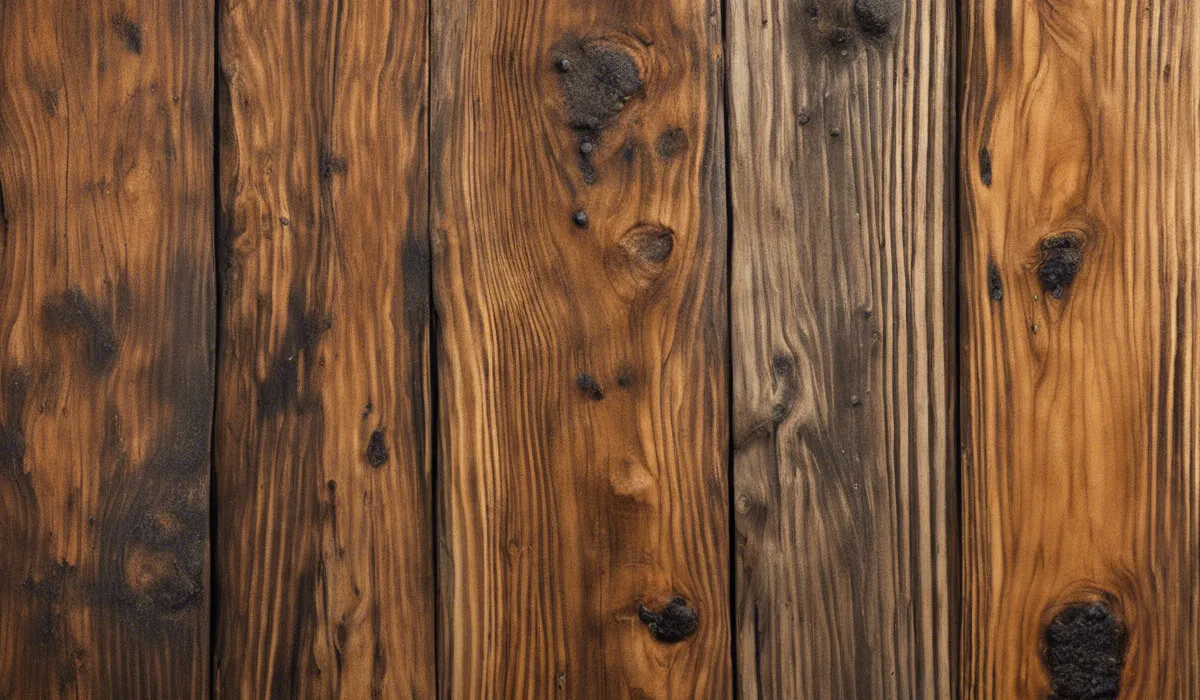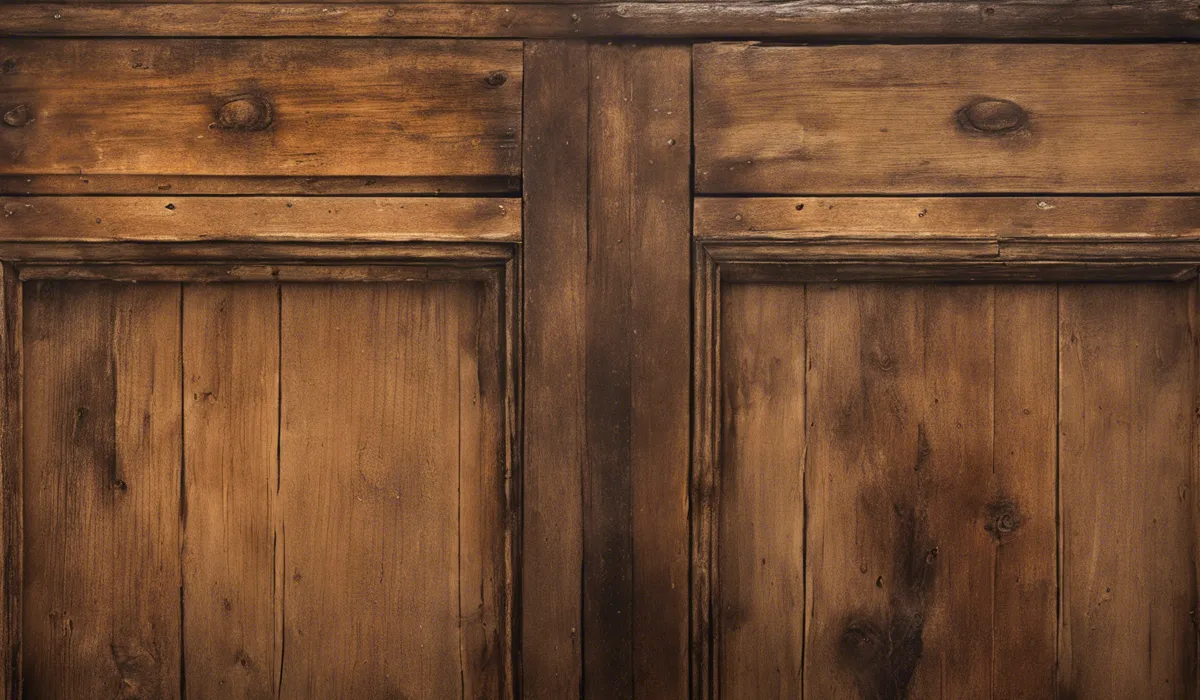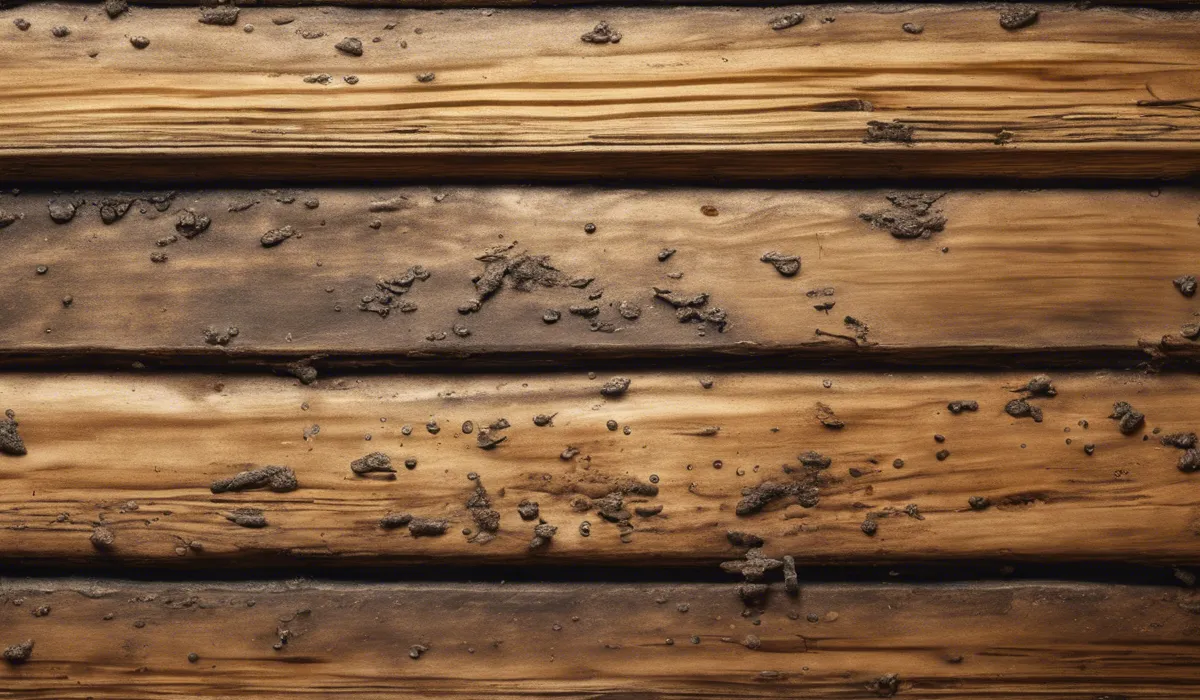Vinegar can kill surface mold on wood, as its acidity creates an inhospitable environment for mold.
Apply white distilled vinegar directly to the affected area, let it sit for an hour, then wipe clean. It’s not effective for mold within the wood.
Understanding Mold on Wood

What Is Mold and How It Grows
Mold is a type of fungus that can grow almost anywhere there is moisture and organic material.
It reproduces through tiny spores that float through the air, landing on surfaces. When mold spores land on a damp spot on wood, they begin to grow and spread.
Mold on wood can appear in various colors, including black, white, green, or yellow. It often looks like a stain or smudge and can have a fuzzy appearance.
Conditions for Mold Growth on Wood
Wood is prone to mold growth when it is exposed to moisture for an extended period. This can happen due to high humidity, water leaks, or condensation.
Poor ventilation can also contribute to higher moisture levels, creating the perfect environment for mold to thrive. Wood that is not properly sealed or treated is especially vulnerable to mold infestation.
Health Risks and Damage to Wood Surfaces
Mold on wood can cause various health issues, especially for those with allergies or respiratory problems.
It can trigger sneezing, coughing, and eye irritation. Prolonged exposure may lead to more severe reactions.
Besides health risks, mold can also damage wood surfaces, leading to structural problems. It can discolor the wood, break down the fibers, and cause an unpleasant musty odor.
Vinegar as a Mold Killing Agent

Properties of Vinegar Against Mold
Vinegar is a mild acid that can kill many types of mold on contact. Its acidic properties disrupt the growth and survival of mold, making it a simple and effective solution for mold removal on non-porous surfaces like glass and tiles.
It is important to note, however, that while vinegar can address surface mold, it may not penetrate deeply enough to affect mold growing within wood.
White Vinegar vs. Other Vinegars
White distilled vinegar is often recommended for mold removal due to its higher acidity level.
It is more potent than other types of vinegar, such as apple cider vinegar, making it more effective at killing mold. Other vinegars may still have some effect, but white vinegar is the preferred choice for its mold-killing capabilities.
Comparing Vinegar to Other Mold Removal Agents
When compared to commercial mold removers, vinegar is a safer, non-toxic alternative. It does not emit harmful fumes and is environmentally friendly.
However, commercial removers may contain stronger chemicals that can kill mold more thoroughly, especially on porous surfaces like wood.
It is important to weigh the pros and cons of each option, considering the severity of the mold problem and the type of surface affected.
Application of Vinegar to Remove Mold on Wood

Step-by-Step Guide to Using Vinegar on Mold
Removing mold from wood with vinegar involves a few simple steps. First, you should ensure that the area is well-ventilated.
Apply white distilled vinegar directly to the moldy wood using a spray bottle or a cloth. Let the vinegar sit for at least one hour to penetrate and kill the surface mold. Afterward, use a brush or cloth to wipe away the mold.
If stains persist, you may need to repeat the process or sand the area lightly after the wood has dried.
Safety Precautions and Protective Gear
While vinegar is less hazardous than many mold removal products, it is still important to protect yourself.
Wear gloves, goggles, and a mask to prevent any mold spores from coming into contact with your skin or being inhaled. Ensure that the room is well-ventilated to avoid inhaling the vinegar fumes, which can be irritating.
Tips for Preventing Future Mold Growth on Wood
To prevent mold from returning, keep wood surfaces dry and well-maintained. Use dehumidifiers or fans to reduce humidity in the air.
Fix any leaks promptly and ensure that wood surfaces are properly sealed. Regular cleaning and periodic inspections for early signs of mold can help you tackle the problem before it becomes widespread.
FAQs About Vinegar Killing Mold on Wood
Does vinegar effectively kill mold on wood surfaces?
Yes, vinegar can effectively kill surface mold on wood due to its acidity, which creates an environment where mold cannot thrive.
How should vinegar be applied to wood to kill mold?
Apply white distilled vinegar directly to the moldy area, let it sit for an hour, and then wipe the area clean.
Can vinegar kill mold within the wood?
No, vinegar is not effective for killing mold that has penetrated beneath the surface of the wood.
Is it safe to use vinegar on all types of wood surfaces?
Vinegar is generally safe for most wood surfaces, but it’s always best to test a small area first or consult the manufacturer’s guidelines.
How long does vinegar take to kill mold on wood?
Vinegar should be left on the affected wood surface for at least one hour to effectively kill surface mold.
Final Thoughts
Vinegar can effectively kill surface mold on wood due to its acidic nature. By applying white distilled vinegar and allowing it to sit for an hour before wiping, one can remove visible mold.
However, it is important to note that vinegar does not penetrate to eradicate mold that has infiltrated deeper into the wood.
